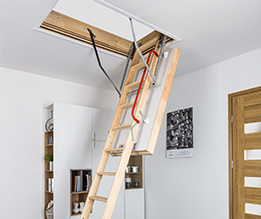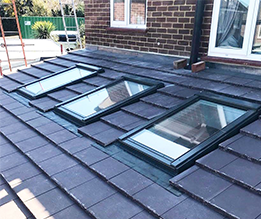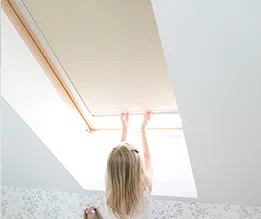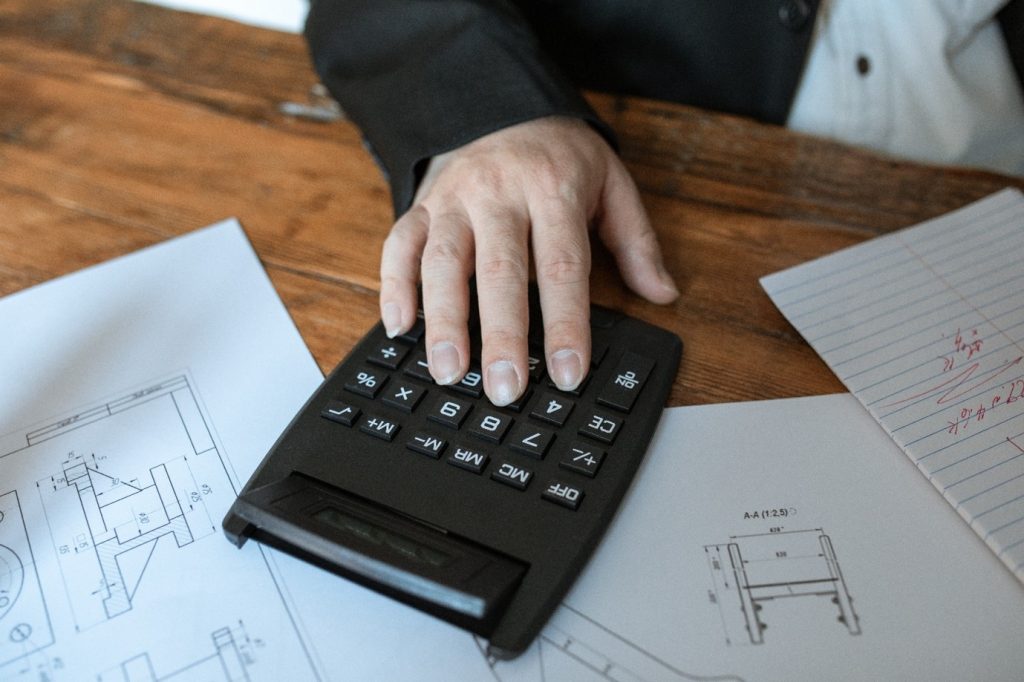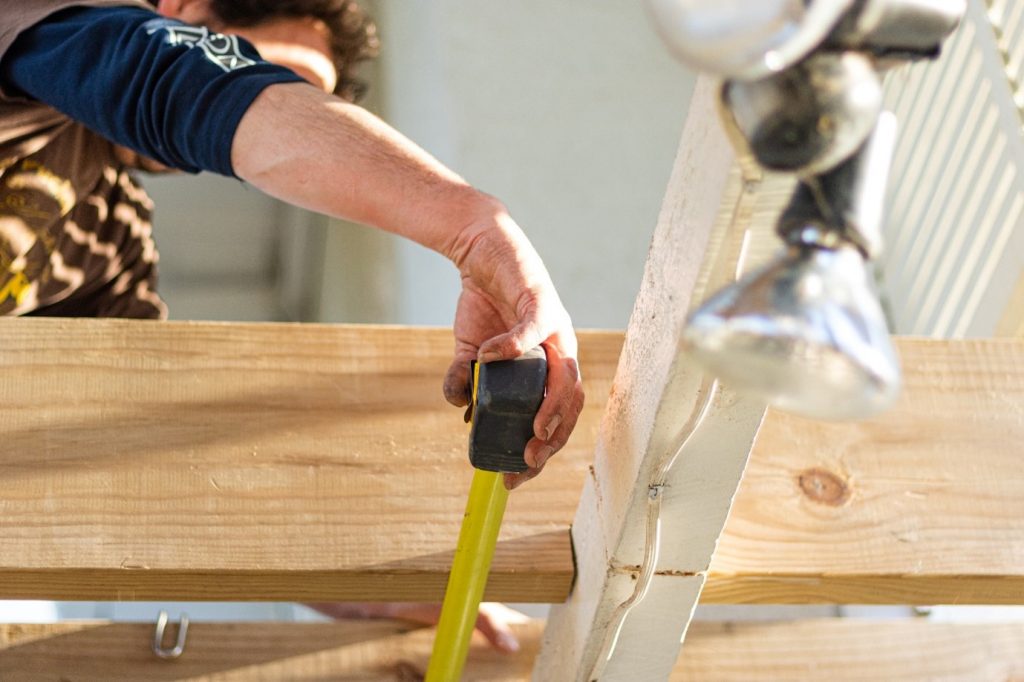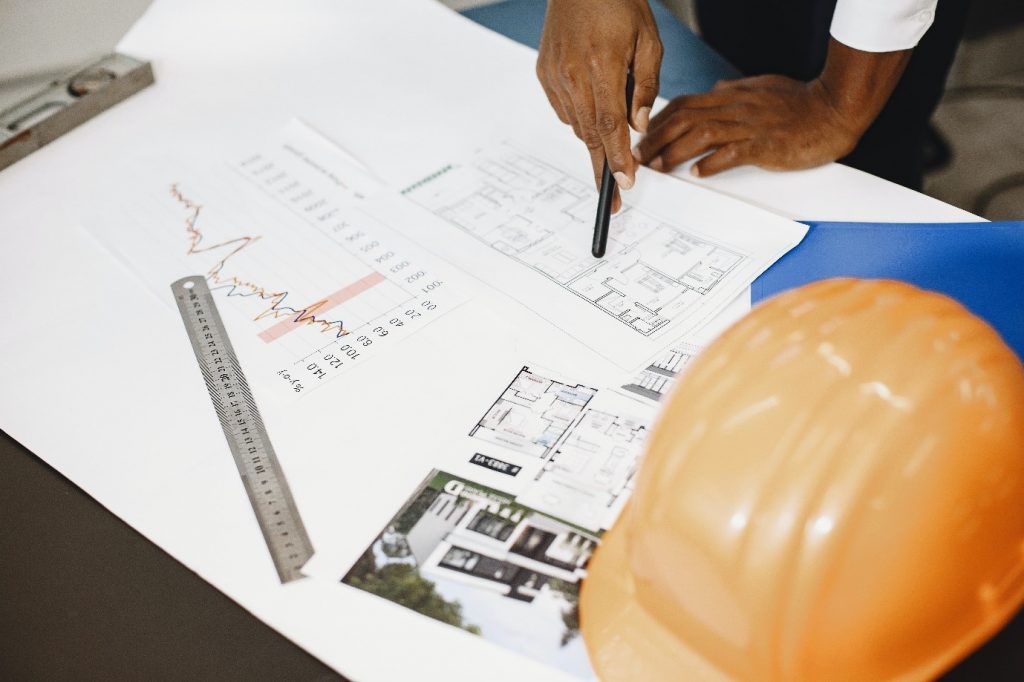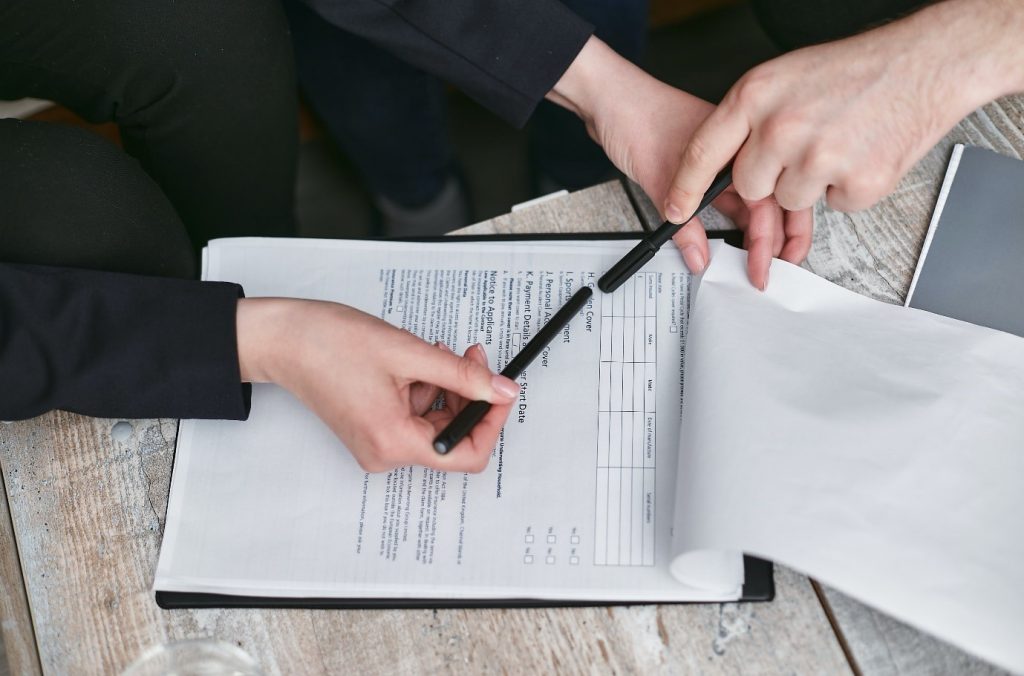How Much Does It Cost to Build a House?
If you’re considering building your own home, then one of the first questions you’ll have is: how much does it cost to build a house? Starting from scratch can be a tempting project for many, and it may even be cheaper than buying a new property from a developer. However, there is so much to consider when putting together a price plan for a self-build, and without proper planning, you could end up spending more than you intended. In this guide, we’ll take you through the average cost to build a house, and breakdown these costs into each section of the build. We’ll cover:
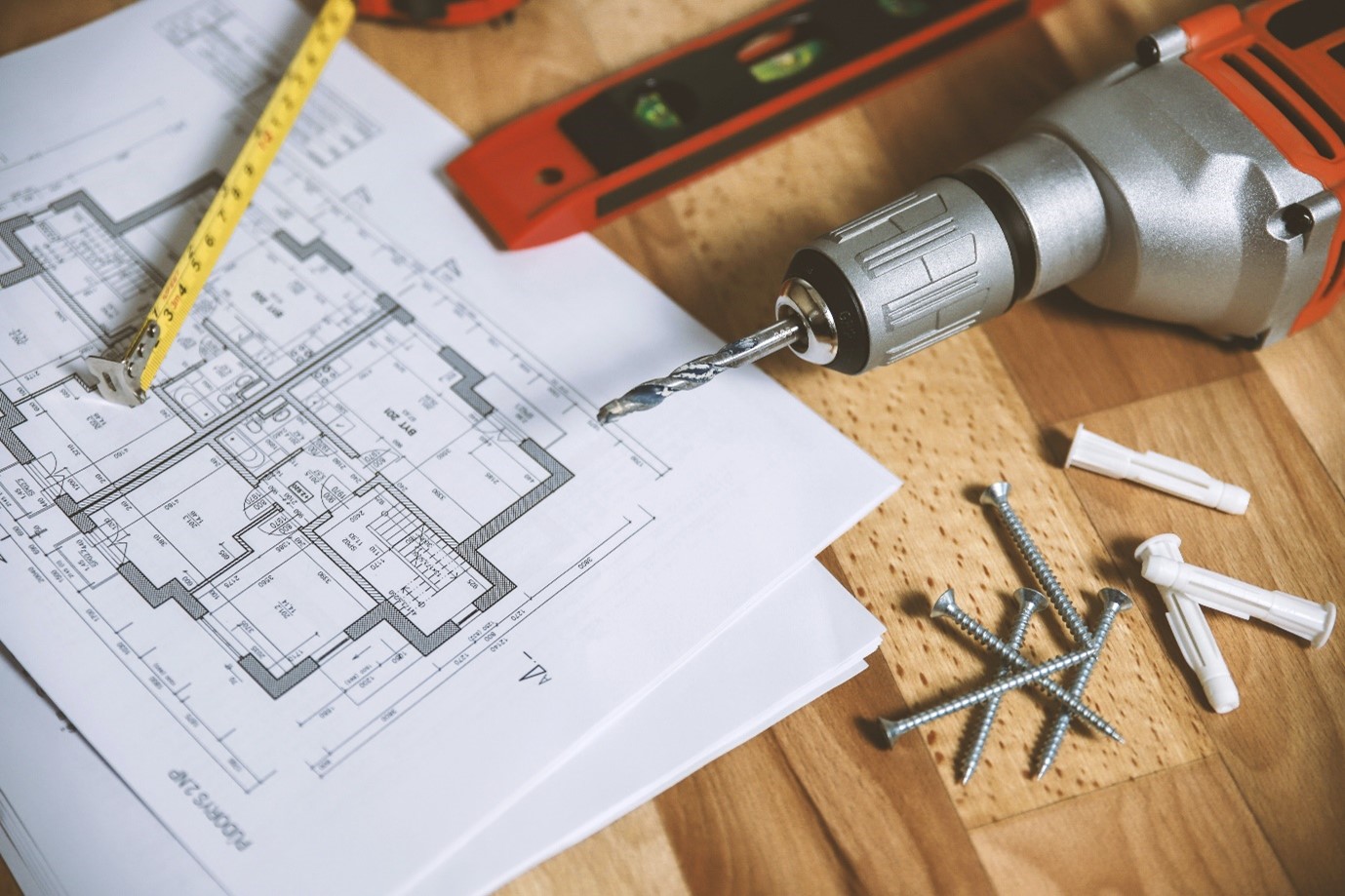
Let’s get straight to it — how much does it cost to build a house?
There are countless variables that can affect the average cost to build a house in the UK, but the standard estimate for total costs is usually between £1,500 and £3,000 per square meter*. The national UK average for a three-bedroom dwelling is around 88–100m². So, a three-bedroom house will likely cost between £32,000 and £300,000 to build. For a four-bedroom house, which tend to measure 100–140m², you can expect to pay between £150,000 and £420,000.
The estimated cost to build a house depends of course on the size of the property, the materials you use, how long it takes, and how many people you hire to build it.
The next question you must ask yourself is whether you will hire a contractor to build your home for you. Going solo — which involves organising everything from the paperwork to the materials and labour yourself — is cheaper. It also means you have more creative control over key decisions like what to prioritise your budget on, whether or not you’d like to build an eco-home, and so on. Self-builders are also exempt from the Community Infrastructure Levy, which may further reduce your costs. You can also choose to be the project manager of your self-build to save a bit more.
If you choose to hire a contractor to build your house, they will take on the whole self-build project for you which can save you a lot of headaches and potentially costly mistakes. It means relinquishing a lot of the control you would have if you built your home yourself, but you will still be able to work closely with them to achieve your vision. It’s essential that you choose your main contractor carefully before agreeing to work with them to avoid hiring a company that isn’t up to the job, or whose vision for the project differs from your own.
Overall, and whichever method you choose, it can be cheaper to build your own home than it is to buy a ready-made property from a developer. Your home could even be worth more than its combined land and build cost. However, you will need to thoroughly prepare and execute your plan perfectly, including sticking to your budget, in order to pull this off.
For most, the first step when building your own home is to purchase the land you will build it on. This will involve paying the price of the land, plus legal fees and stamp duty on top of that. You pay stamp duty land tax on all land over a certain price (the threshold varies, and you should note that there are different rates in England, Scotland, and Wales). When building your own home, you pay stamp duty based on the cost of the land, not the property — this is one of the reasons why it can be cheaper than buying a new build.
In terms of land price, location can have a big impact on cost. For example, you can expect to pay a premium in London and other major cities in England, but in Wales, you can get loans worth up to £400,000 to help cover the cost of building your own home under the Self Build Wales scheme.
Another factor that can affect the price of your land is the condition it is in and the lay of the land itself. Slopes and the condition of the soil can affect the price, as well as whether your plot is connected to services like gas, water, and electricity. These will also contribute more towards your construction costs. You can find out more in our buying land guide.
Construction costs will take up a large proportion of your budget. Within this, you’ll pay for the labour as well as the materials required to build your home — though you may be able to claim back VAT on these. Remember to keep an eye on inflating costs to get the best deal for your building materials. For example, during the COVID pandemic, shortages in timber and steel made these temporarily more expensive, so timing your build correctly could save you a lot of money.
So, what’s the most expensive part of building your own home? In terms of construction, the superstructure will likely be the most demanding portion, followed by the foundations and flooring. Here’s a list of the construction expenses you can expect to pay for:
- Foundations
- Floor structure
- Superstructure (including glazing)
- Roof structure and cover
- Drainage
- Electrics
- Plumbing and heating
- Internal carpentry (including kitchen)
- Plastering
- Decorative features
- Tiling
- Flooring
- Landscaping
The superstructure accounts for the largest proportion of the total cost of your self-build. A superstructure comprises the main framework, including load-bearing walls, flooring beams, roof beams, and other essential structural elements.
After this, it’s the foundations and flooring that are the biggest expense. Foundation costs are generally per square metre, but the rate will vary depending on the foundation type. This is determined by the condition of your land plot, as implementing solutions for bad soil, proximity to trees, and slopes will all have an impact on the cost. Be sure to read our guide to house foundations and groundwork to find out what else you’ll have to consider.
The types of materials you choose for your structure will also affect the construction costs for your project. Timber frames are generally cheaper than brick, but some woods may actually be more expensive — for example, oak. The type of bricklaying method will also affect the price of a brick structure, as some take longer than others and you’ll be billed for the extra labour.
Of all the options, natural stone is the most expensive due to having the highest material and labour costs, whereas cement-cladded buildings are among the cheapest to build. Each material has it’s own strengths and weaknesses aside from the cost, however, so be sure to weigh up your options carefully.
When it comes to roofing, costs can comprise:
- The roof structure
- Insulation
- Felt and battens
- Roof covering
- Flashings and detailing
Generally, the steeper a roof is, the more expensive it will be to build. A simple, low-pitched roof is the cheapest option, as this uses type uses less materials and its simple design means you won’t have to pay for additional architecture fees, custom carpentry, and so on. When it comes to roof coverings, small roof tiles will be more expensive than large tiles due to labour and material costs, and of course any decorate features will cost extra.
Flooring can be timber (which is the most cost effective), steel (which is stronger than timber, but more expensive), or concrete (which is of superior strength but highest cost). Floor finishes — such as hardwood, carpet, and flagstones — are added on top of this cost.
Don’t forget to factor windows and doors into your budget too. Properly fitted, insulating, double glazed windows and doors can save you money in the long run in energy costs, so the cheapest option isn’t always the best value. You can view our full range of high quality roof windows here.
Even with a DIY build, you will have to assemble a team of professionals to help you complete your project, including (but not limited to):
- Project managers (unless you plan to project manage yourself)
- Architects
- Builders
- Engineers
You’ll need to get quotes from electricians, plumbers, plasterers, carpenters, kitchen and bathroom fitters, and landscape gardeners in order to assess the total cost of your self-build. If you hire a company to build your home for you, they will likely organise all this for you or at least be able to recommend some trustworthy suppliers. Otherwise, our guide to finding reliable architects and builders can help you decide who to hire.
You’ll also need to consider the legal side of things, for example hiring a lawyer or conveyancer who can help you navigate the paperwork and payments you need to complete to purchase land and build your home in accordance with the law.
Hidden costs
There will inevitably be a variety of hidden costs to building your own home outside of land, construction, and labour. For example, planning applications, self-build insurance, and other site surveys and reports may seem like small expenses, but they can all add up and push your budget to the brink if not included in your projections. At the time of writing, these are the hidden costs you can expect to pay during your self-build project:
- Legal fees
- Stamp duty and land tax
- Topographical site survey
- Design fees
- Structural engineering fees
- Planning permission and building regulations fees
- Warranty
- Self-build insurance
- Demolition costs (if applicable)
- External works
You will also have to pay for site set-up and management costs for the duration of your project, including any onsite offices, scaffolding, security, safety equipment, and waste removal. It is also advisable to keep an amount of money, say 10%, separate from your main budget in case you’re unfortunate enough to need to pay for any fines, penalties, or disasters during the course of the build.
If you’re trying to save money on your self-build project, there are a lot of factors that can be looked at to reduce build cost. For example, the bigger the house, the more expensive it will be to build based on materials and labour, so you may be tempted to design a smaller home — but you must also take value into account. A large house may end up being better value for money, as it can maximise the potential of the land you purchased.
If you’re wondering whether to build a second floor, bear in mind that a two-storey property is better value than a bungalow — a bungalow has the same foundation, roof, and first-floor wall costs, but you get a much smaller property for your money. Adding a staircase and an upper floor won’t add much more to your final bill, while lowering the height of the ceiling may reduce costs.
Other factors that can increase the cost of your self-build include unusual or irregular shapes, decorative features, and the quality of the fixtures you install — though, again, paying upfront for better quality fittings might save you money in the long run. Simple designs can keep architectural costs low, so a square-shaped, two-storey home is the way to go if your plot will allow it.
You can also save significant amounts by opting for a simple heating system and forgoing a chimney — most modern homes don’t need one, and they are expensive to build. A simple heating system is a gas boiler with radiators, and optional extras include underfloor heating, log burners, and so on. These cost more to fit and run but could potentially increase property value if you plan to sell.
Alternative energy may cost more or less than gas depending on where you live, so it’s worth doing your research to see the best solutions for you. You can find out more in our utilities guide.
Internally, kitchens and bathrooms are the most expensive rooms you will have to install, so make sure you factor these into your budget and put aside more money than you would for a standard room. The bigger the kitchen and the more bathrooms you have, the higher your bill will be — but they may contribute even more to your final property value and offer a great return on investment.
You could save a significant amount of money if you project manage your self-build yourself. Project management involves finding and hiring the right people; ordering the correct materials and ensuring they’re delivered on time; checking that the work is being carried out properly and is up to standard; ensuring the site follows health and safety requirements; sticking faithfully to the budget, and other responsibilities.
As a project manager, you will co-ordinate and liaise with every designer, trader, supplier, legal-worker, and external company while taking full responsibility for the project. A project manager can cost thousands of pounds, so taking this role on yourself can be a tempting way to cut costs. However, this is a huge undertaking, and you should only do this if you have experience in construction or project management already. Outsourcing to a professional project manager may end up being more efficient.
Another way to cut down the cost of your self-build is to do some or all of the labour yourself. Building a home requires skills in the following:
- Carpentry
- Fitting insulation
- Tiling
- General labouring
- Plumbing and wiring
- Painting and decorating
- Floor laying
- Roofing
- Landscaping
- Bricklaying
- Plastering
If you’re confident in your abilities and up to the challenge, you could give any of the above jobs a go — but bear in mind that what you build must be up to code or you could face fines and penalties, along with expensive remedial work.
Alternatively, when hiring professionals, be sure to get multiple quotes from different tradespeople to ensure you’re getting the best deal for your labour. As with most aspects of building a house, remember that cheaper doesn’t always mean better value. Always request to look at their qualifications and portfolios if they have them, and ask around to see if anyone’s worked with them before.
Once your self-build has been completed, you can claim back VAT on all qualifying building work and materials, as long as:
- the house is separate from any other buildings and self-contained
- the house is for you and your family to live or holiday in
- the house is not used for business purposes (excluding working from home)
You can only claim back VAT on a self-build once and you must apply within three months of your home being completed. VAT paid on professional services, such as architects and lawyers, is not eligible for a refund, but you can still receive a decent sum of your money back this way.
Working out the cost of your self-build is only half the journey — you’ll first have to work out how to pay for it. Your funding will likely come from these sources:
- your savings
- equity from selling your home
- self-build mortgages
Self-build mortgages differ from other mortgages in that you receive the money in stages, as each part of the project is completed (or begun). This is because most mortgages use the property as collateral, but in this case, it hasn’t been built yet. Your lender will decide whether these payments are made in advance (meaning you’ll receive your money before the next stage of work begins) or in arrears (so that you’ll be reimbursed after the step is completed). This may seem tedious, but receiving the money gradually as opposed to a lump sum can also help with managing your budget.
Remember — you should always set at least 10% of your predicted cost aside for emergencies and unforeseen costs. Though building your own home is often cheaper than buying one outright, it’s much easier to go over budget and a lot more can go wrong along the way!
Building your own home can be extremely rewarding, and it may even be cheaper than buying a new property from a developer. But as you may expect, there is a lot to budget for and even more hidden costs to consider when building a house from scratch. Hopefully, the tips in this guide can help you put your budget together and work out how much you need to save to start your self-build project.
Our self-build costs calculator can help with getting a rough idea of your expenses too, or simply browse more of the helpful guides in our knowledge hub — from the roof to the foundations, we have plenty of useful advice.
At RW4Y, we can help you with all your glazing needs no matter the size of your home improvement project. As a supplier of FAKRO roof windows, you can rest-assured that the products you buy from RW4Y are made with the best quality materials. So, take a look at our roof windows today or get in touch at 0333 600 9090 to speak with an expert advisor.

